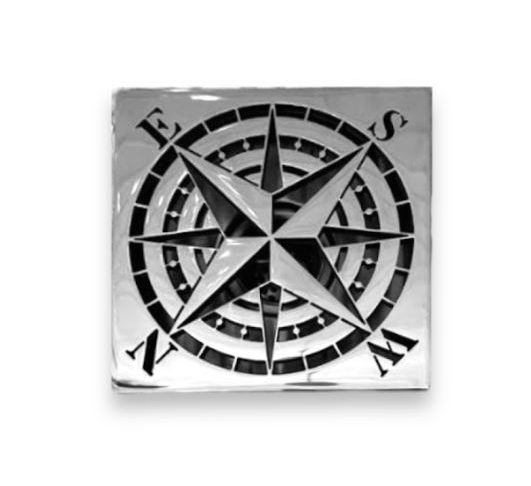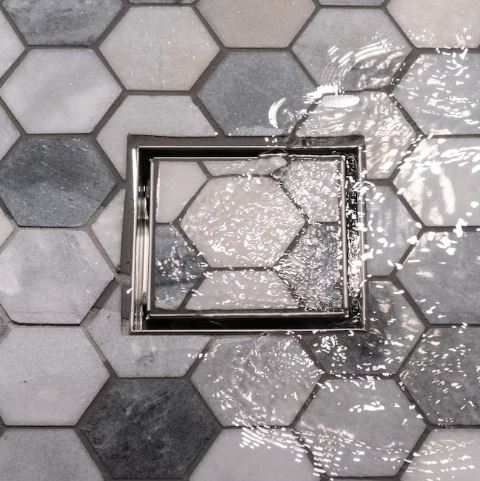Home Inspo, DIY, Home Improvement, Interior Design
What are the different types of shower drains?
Shower drains are an essential component of any bathroom, playing a crucial role in ensuring effective water drainage and preventing water damage. When designing or renovating a bathroom, selecting the right type of shower drain is essential to ensure optimal functionality and aesthetic appeal. In this article, we’ll explore the various types of shower drains available on the market today, their features, installation process, and advantages and disadvantages.
Introduction to Shower Drains
Shower drains are designed to remove wastewater from showers efficiently. They come in various shapes, sizes, and materials, catering to different design preferences and drainage needs. Selecting the appropriate shower drain is crucial for effective water drainage and maintaining the bathroom’s overall aesthetic appeal.
Importance of Choosing the Right Shower Drain
Selecting the appropriate shower drain is crucial for various reasons. First of all, it makes sure that water drains properly, keeping water from collecting in the shower area and causing water damage and slick surfaces. A well-chosen shower drain can also improve the bathroom’s aesthetic appeal by tying in with its style and design.
Common Types of Shower Drains
Traditional Point Drains
Traditional point drains, also known as center drains, are the most common type of shower drain. They are typically located in the center of the shower floor and consist of a round or square-shaped grate that covers the drain opening.
Functionality
Point drains collect water directly from the center of the shower floor and channel it into the drainage pipe below.
Installation Process
Installing a traditional point drain involves cutting a hole in the shower floor, inserting the drain assembly, and securing it in place with waterproofing materials.
Pros and Cons
Pros:
- Effective at draining water quickly
- Suitable for various shower designs, except for Designer Drains collection
Cons:
- Limited design options for the drain grate
- Prone to clogging if not maintained regularly
Linear Drains
Linear drains, also known as trench drains or channel drains, are becoming increasingly popular in modern bathrooms. Unlike traditional point drains, they are long and narrow and run along one or more edges of the shower area.
Features
Linear drains feature a long, narrow grate covering the entire drain channel length, allowing water to drain efficiently across the shower floor.
Installation Process
Installing a linear drain involves creating a sloped shower floor to direct water toward the drain channel. The drain assembly is then placed flush with the shower floor, creating a seamless and visually appealing look.
Advantages and Disadvantages
Advantages:
- Allows for more flexibility in shower design
- Easy to clean and maintain
Disadvantages:
- Higher initial cost compared to traditional point drains
- Requires careful planning and installation to ensure proper drainage
Square Drains
Square drains, also known as square point drains, offer a modern and sleek alternative to traditional round point drains. They feature a square-shaped grate that covers the drain opening, providing a contemporary look to the shower area.
Characteristics
Square drains function similarly to traditional point drains but offer a more modern aesthetic with their square-shaped grates.
Installation Process
Installing a square drain is similar to installing traditional point drains. It involves cutting a hole in the shower floor and securing the drain assembly in place.
Pros and Cons
Pros:
- Stylish and contemporary design
- Available in various finishes to match bathroom decor
Cons:
- Limited design options compared to linear drains
- May require more frequent cleaning to prevent clogs
Round Drains
Round shower drains, sometimes called circular drains, are a traditional and popular style. Usually, they have a circular grate covering the drain aperture, which lets water enter the drainage pipe underneath. The ease of use and efficiency of round drains in the shower area are well known. Cutting a hole on the shower floor and firmly inserting the drain assembly are the steps involved in installing circular drains. Round drains have the benefit of being adaptable, as they go well with a wide range of bathroom layouts and designs. Round drains, like other conventional point drain types, might only have a few grate design possibilities, and frequent maintenance is necessary to keep clogs at bay and guarantee good drainage performance. For more Round Drain possibilities, have a look.
Tile-In Drains
Tile-in drains, also known as concealed drains, offer a seamless and minimalist look to the shower floor. Unlike traditional drains with visible grates, tile-in drains are designed to be integrated into the shower floor, with tiles laid directly over the drain opening.
Description
Tile-in drains feature a shallow channel with a concealed grate that sits flush with the surrounding tiles, creating a seamless and uninterrupted surface.
Installation Process
Installing a tile-in drain involves recessing the drain channel into the shower floor and tiling over it to create a seamless finish.
Benefits and Drawbacks
Benefits:
- Provides a sleek and minimalist look to the shower area
- Easy to clean and maintain
Drawbacks:
- Limited design options for the drain grate
- Requires precise installation to ensure proper drainage
Designer Drains
Designer Drains offer a clever and luxurious, fun alternative to traditional shower drains. They come in various unique designs and shapes, adding a touch of personality and style to the shower area. While designer drains may not be as common as other types, they can serve as focal points in bathroom design, showcasing creativity and individuality.
Designer Drains Unique Features
Designer Drains feature intricate patterns, motifs, or custom designs that transform them into artistic elements within the bathroom. Designer Drains offers endless possibilities for adding visual interest to the shower space, from geometric shapes to floral patterns. We have Square Shower Drains and Round Shower Drains
Installation Process
Depending on the specific design and configuration, installing Designer Drains follows a similar process to installing traditional point drains or linear drains. However, special care may be required to ensure that the drain’s intricate design is properly showcased and aligned with the bathroom’s overall aesthetic.
Considerations
While designer drains offer a unique and stylish alternative to traditional shower drains, they may come with a higher price tag due to their custom designs and craftsmanship. Additionally, maintenance and cleaning of designer drains may require extra care to preserve their intricate patterns and details over time.
Factors to Consider When Choosing a Shower Drain Cover
Several factors should be considered when selecting a shower drain replacement to ensure it meets your specific needs and preferences.
- Drainage Capacity: Consider the drain’s flow rate and drainage capacity to ensure it can effectively handle the volume of water produced during showering.
- Design and Aesthetics: Choose a drain that complements the design and decor of your bathroom, whether it’s a traditional point drain, linear drain, square drain, or tile-in drain.
- Maintenance Requirements: Consider the maintenance needs of the drain, including cleaning and potential clogging issues, to ensure it remains functional over time.
- Cost Considerations: Evaluate the drain’s cost, including installation expenses, to determine its affordability within your budget.
Choosing the right shower drain replacement is essential for maintaining effective water drainage and enhancing your bathroom’s aesthetic appeal. Whether you opt for a traditional point drain, linear drain, square drain, or tile-in drain, consider factors such as functionality, design, maintenance, and cost to ensure you make the best choice for your needs.
Unique FAQs
- Q: Can I install a linear drain in an existing shower?
- A: Yes, linear drains can be installed in existing showers, but the shower floor may need to be modified to accommodate the drain channel.
- Q: Are tile-in drains prone to leaking?
- A: Proper installation is crucial to prevent leaking with tile-in drains. When installed correctly, they provide a seamless and watertight solution for shower drainage.
- Q: How often should I clean my shower drain?
- A: It’s recommended to clean your shower drain regularly to prevent clogs and maintain optimal drainage. Depending on usage, cleaning every few weeks to months should suffice.
- Q: Are linear drains more expensive than traditional point drains?
- A: Yes, linear



